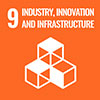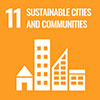Urbanization, land occupancy and supporting infrastructure
In 2015, the UN General Assembly approved the 2030 Agenda. There was an agreement on 17 Sustainable Development Goals (SDGs), the purpose of which was to reverse development patterns around the planet. Cities, as population agglomerations and production centres, are directly challenged actors. The growth patterns followed in recent years show a clear explosion of the urban fabric, and an unprecedented land occupancy. So much so that certain degraded urban sectors are being abandoned to the detriment of new construction sectors located in the urban periphery. The connotations of this phenomenon are multiple, but it is important to focus on the unsustainability of an urban growth model based on urban development, land occupancy and transport infrastructures that have not been planned in coordination with these urban projects. Based on the foregoing, this article reflects on the externalities of this phenomenon, and raises some reflections to help transition towards a more sustainable city model.
ODS



 Mireia Hernández Asensi
Mireia Hernández AsensiShe is a Civil Engineer specializing in Urban Planning and Transportation and Postgraduate in Private Management of Infrastructures and Urban Planning Elements from the Universitat Politècnica de Catalunya (UPC). She has more than 10 years of experience in planning and design of transport infrastructures, urban planning, drainage and urbanization. She has managed projects in Europe and Latin America for private companies and public institutions. She works as Project Manager at PCE Projetos e Consultorias de Engenharia Ltda (Rio de Janeiro). Previously she worked as Project Manager and Project Engineer in Barcelona, São Paulo and Brasilia. She is a Course Instructor of the Master in City and Urbanism (UOC).
 Eduard J. Álvarez-Palau
Eduard J. Álvarez-PalauDoctorate in Transport Engineering and Infrastructure (UPC), engineer of Paths, Canals and Ports (UPC), and master’s in Organizational Management (UOC). Associate professor of Economics and Business Studies at the UOC and member of the research group Sustainability, Management and Transport (SUMAT). Prior to this, he was a post-doctoral researcher at the University of Cambridge an intern with the European Committee (DG MOVE), associate professor at the UPC and external consultant for the UOC. He also has experience in project management in civil engineering, urban planning and transport in private businesses at an international level.



